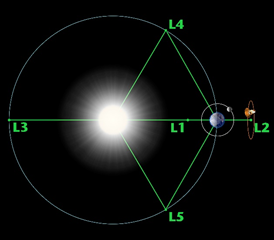

27th January 2023 (6 Topics)
Context
The Indian Space Research Organisation (ISRO) is planning to launch the Aditya-L1 mission by June or July this year.
About Aditya-L1 mission
- Aditya-L1 Mission is India’s first solar mission planned by ISRO. Earlier the name was Aditya -1, which has been renamed as Aditya-L1 Mission.
- Aditya-L1 is the first Indian space mission to observe the Sun and the solar corona.
- It is ISRO’s second space-based astronomy mission after AstroSat for a scientific expedition to study the Sun.
- ISRO planned to place the satellite in the halo orbit around the Lagrangian Point (L1). Hence the mission was renamed as Aditya L1 mission.
Objectives of the mission
- to help in tracking Earth-directed storms and predict their impact through solar observations
|
Coronal Mass Ejections (CMEs) are large expulsions of plasma and magnetic fields from the Sun’s corona. |
- to research the Sun’s corona (Visible and Near-infrared rays), photosphere (soft and hard X-ray), chromosphere (Ultra Violet rays), solar emissions, solar winds and flares, and Coronal Mass Ejections (CMEs), as well as conduct round-the-clock imaging of the Sun
Payloads used for the mission
- The 1,500 kg satellite carries seven science payloads with diverse objectives.
- Seven science payloads:
- Visible Emission Line Coronagraph (VELC)
- Solar Ultraviolet Imaging Telescope (SUIT)
- Aditya Solar wind Particle Experiment (ASPEX)
- Plasma Analyser Package for Aditya
- Solar Low Energy X-ray Spectrometer (SoLEXS)
- High Energy L1 Orbiting X-ray Spectrometer (HEL1OS)
- Magnetometer
What are Lagrange Points?
|
Lagrange points are named in honour of Italian-French mathematician Josephy-Louis Lagrange. |
- Lagrange Points are positioned in space where the gravitational forces of a two-body system like the Sun and the Earth produce enhanced regions of attraction and repulsion.
- These can be used by spacecraft to reduce fuel consumption needed to remain in position.
|
Types: There are five Lagrange points in the Sun-Earth system. Of the five Lagrange points in the Sun-Earth system, only the last two, called L4 and L5, are stable. Satellites at the First three points need constant adjustments to stay balanced and in place.
|



